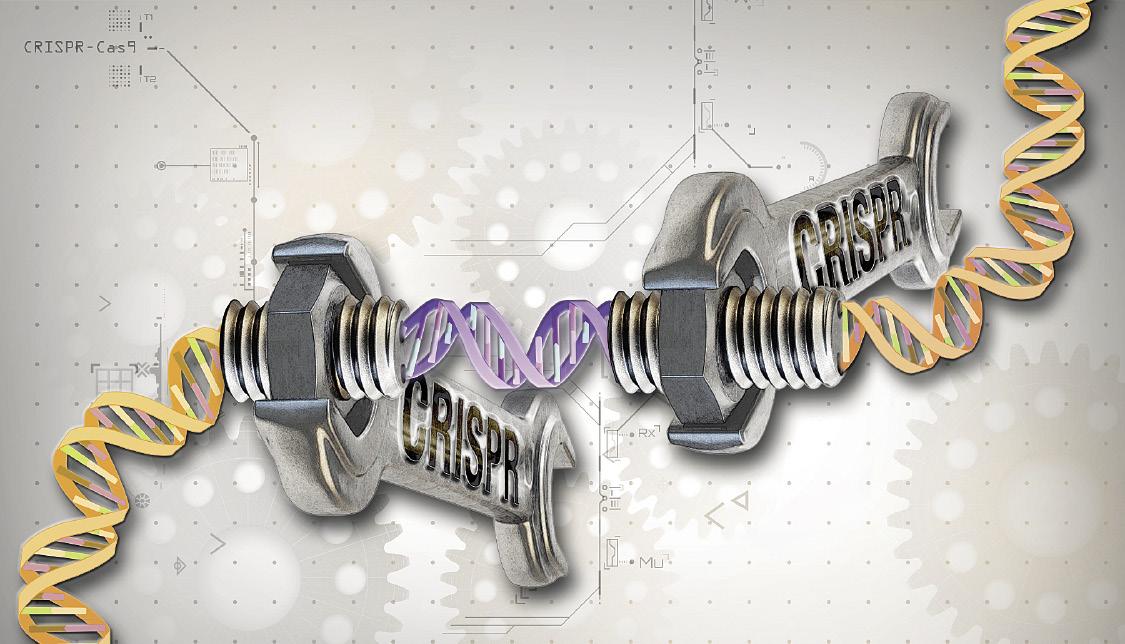Changing genes a la carte: where are the red stripes?
2017/06/01 García Etxebarria, Koldo - Biodonostia Osasun Ikerketa Institutuko ikertzailea Iturria: Elhuyar aldizkaria

Since we acquired the ability to cut and paste DNA, our desire has been to use these capabilities to solve genetic diseases. Trials, known as “genetic therapies,” were conducted but the results were not expected. However, in the last two or three years, the idea of repairing the genes has risen strongly thanks to the CRISPR technique (in March 2016 Elhuyar magazine offered him a report). This technique will allow the desired change in a specific gene in a very specific way and without altering the other components of the genome. This opens the door to a change of a la carte genes. After the approval in the United States of the first genetic therapies trials of this new generation and the beginning of the first trials in China, the debate on the limits of the use of this technique has resurfaced.
Diseases
Suppose we are able to fix the gene for a deadly genetic disease and therefore cure it. Most of us would agree that the solution can be used either CRISPR or a similar technique. For most people it would be cruel not to use a medicine or a solution. But when it comes to changing the genes a la carte there are resistances.
To understand this prudence of gene change, we must remember a raw and black past: eugenics. This movement claimed the elimination of the harmful characteristics of human genetic heritage to be healthier and stronger. By putting their beliefs into practice they provoked forced sterile and genocidal. Therefore, it is not surprising that the ability to modify the genetic characteristics a la carte generates concerns.
On the other hand, the question is also here: What is a disease? What harmful feature? Many people with a genetic material syndrome are not considered sick. They are born like this, so they believe there is nothing to solve or complete. Away from vital diseases, gene change is not so clear. Prudence suggests that we analyze each case and, in any case, make the final decision oneself, not establish a general rule, as is done with any other medication.
Inconsistencies
We would be naive if we think that the editing capacity of genomes will only be used in cases of life or death. Just like surgery is used to save lives, it is used to make aesthetic changes. Contact lenses are used to change the color of the eyes, ultraviolet rays are taken so that they are more black or operated to eliminate wrinkles. If it is possible to achieve this through gene editing (changing the genes that determine the color of the eye or increasing the production of melanin in the skin), more than one would use it, and who would allow it. Should all of them be limited in one way or another, or should they be left in the hands of everyone as is done with cosmetic surgery? It seems to me that the limits are blurred and that there are no easy answers.
Red stripes
Until now a red line was accepted: not to transmit to the next generation the genetic changes made. That is, if an individual is made a genetic change, it only affects him and is not transmitted to his successors. Thus, changes in a person would not affect the genetic heritage of the entire species. In fact, this is so de facto, since the genes that repair only change in certain cells or tissues, so they cannot be passed on to generations to come. For this to be so, the genetic material of the eggs or sperm should be changed and, for now, it is not done this way.
However, this issue has also reopened the debate: after repairing a gene from a person, do you have to resolve it in your children or go directly transmitting genes without errors? That is, as embryos are chosen today, do you make changes in the embryo formation eggs and sperm or in the embryo itself to repair the gene that presents a defect? This could be described as the aforementioned soft eugenics, since its harmful properties would disappear from the species. But who decides what is a harmful feature?
In short, all this debate can be summarized on this point: how to regulate the uses of genome editing techniques? This is a debate that goes beyond science and that we have to reach consensus and consensus in society. On the one hand, it will be necessary that the possible laws regulating this matter be clear. On the other hand, trust the ethics committees that grant the permits and ensure their professionalism, as so far has happened in the investigation.

Gai honi buruzko eduki gehiago
Elhuyarrek garatutako teknologia



